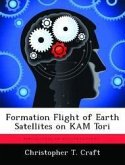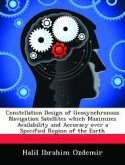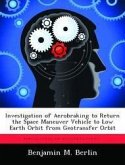An orbit that lies on a Kolmogorov, Arnold, and Moser (KAM) Torus will remain on that torus until and unless it experiences a force that causes it to leave the torus. Earth satellites that are subject only to the Earth's gravity field may lie on such KAM tori. Analyzing on orbit satellite position data should allow for the identification of the fundamental frequencies needed to define the KAM tori for modeling Earth satellite orbits. KAM Tori are created for the Gravity Recovery and Climate Experience (GRACE) and Jason-1 satellites to model their orbital motion. Precise position data for the satellites is analyzed using a modified Laskar frequency algorithm to determine the fundamental frequencies of the orbits. The fundamental frequencies along with a set of Fourier coefficients completely describe the tori. These tori are then compared to the precise orbital position data for the satellites to determine how well they model the orbits. The KAM torus created for the Jason-1 satellite is able to represent the position of the satellites to within 1 km.








